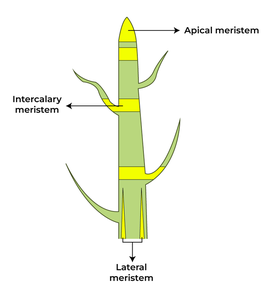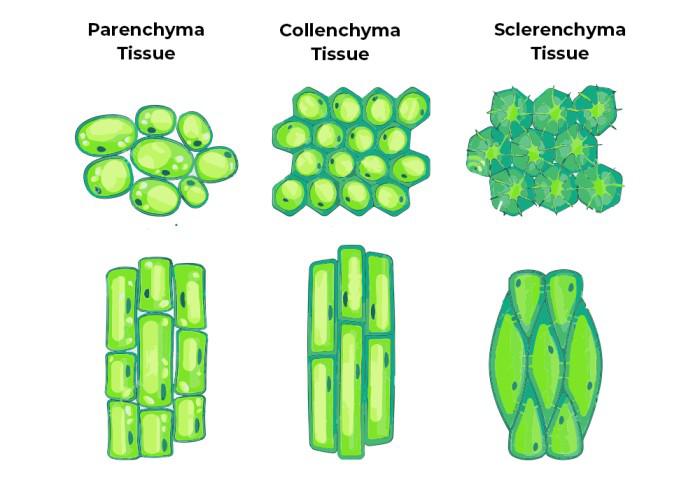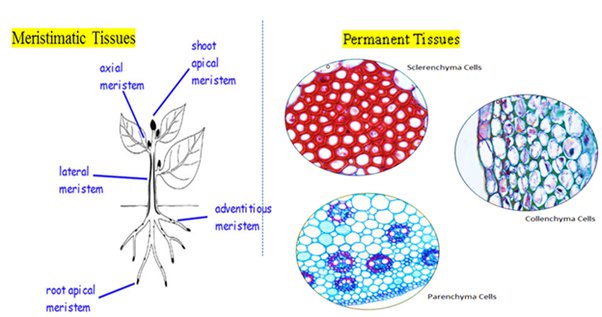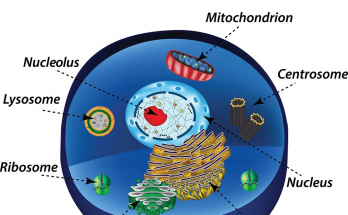| Meristematic Tissue | Permanent Tissue | |
|---|---|---|
| 1 | Meristematic tissue divides repeatedly and is responsible for the growth of plants. | Permanent tissue cells are differentiated from meristematic tissues that have lost their ability to divide and its main function is protective, conductive and supportive tissue. |
| 2 | Meristematic tissue cells are undifferentiated and intercellular spaces are absent | Permanent tissue has fully differentiated and undifferentiated cells . intercellular spaces are present. |
| 3 | Meristematic tissue divides rapidly. | The differentiated cells of permanent tissue have lost their ability to divide. |
| 4 | It is a simple tissue that consists of a single type of cell. | Permanent tissue is a combination of simple and complex tissue. |
| 5 | Cells are always living in meristematic tissue. | Cells of permanent tissue may be living or dead. |
| 6 | Meristematic tissue cells have dense cytoplasm and prominent nuclei. | Non living cells of permanent tissue do not have cytoplasm and nucleus. |
| 7 | Meristematic tissue cells show high rates of metabolism. | Cells of permanent tissue show very less or no metabolism. |
| 8 | Meristematic tissue cell walls are thin. | Permanent tissue cell walls of its cells can be thick or thin. |
| 9 | Meristematic tissue doesn’t contain reserve food. | Some cells of permanent tissue reserve food in the form of starch. |
| 10 | It is restricted to certain parts of the plant body such as the root and shoots Apex. | Permanent tissue cells found throughout the plant body. |
| 11 | Tissue cells are involved in plant growth. | Tissue cells are involved in photosynthesis, conduction and providing mechanical support to the plant. |
| 12 | Apical Meristem, intercalary Meristem, and Lateral Meristem are the basic types. | Parenchyma, Collenchyma, Sclerenchyma, Xylem, Phloem and secretory tissues are various types of permanent tissue. |
 |  |
Class 9 / extra question Answer / NCERT Long Question Answers / Question and Answers / Tissues- Chapter 6 / Uncategorized
12 Important Difference between Meristematic and Permanent Tissues


One Comment on “12 Important Difference between Meristematic and Permanent Tissues”